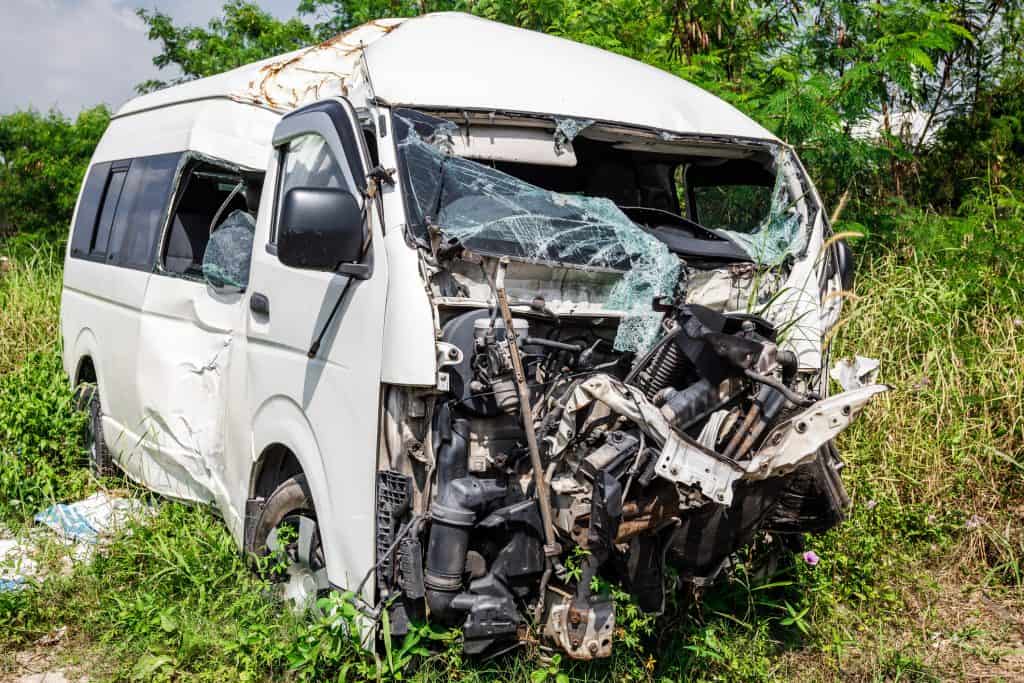
One of the the most ignored areas of occupational health and safety (OHS) is the light commercial and fleet/company vehicles. This is changing in Australia, partly, because the former head of the Transport Workers Union, Tony Sheldon is now a Senator.
In Senate Estimates on October 23, 2019 (page 117 onwards), Senator Sheldon challenged the heads of Safe Work Australia on workplace vehicle safety. He posed a scenario in relation to the collection of injury/incident data:
“If you’re a truck driver and you’re operating for, say, a major retailer and you’re contracted to a transport company and your contract is as an owner-driver—you own your own rig—and you get injured whilst you’re out on the road and you get seriously injured, under what circumstances would that be included and under what circumstances would it not be included in your statistics for serious injury?”
Ms Anthea Raven, Acting Branch Manager, Evidence and Compensation for Safe Work Australia responded:
“Within the national dataset, it would be included if that particular worker was eligible for workers compensation and made a claim to their workers compensation scheme.”
Sheldon made his point about the deficiency of the “national dataset” implying that it was not representative of the community and the (transport) workforce, and therefore policy decisions made on the national datasets are flawed:
On the situation regarding serious injuries and, I might add, other injuries, there is not a set of figures that actually includes over a third of the workforce, because, if they’re not on workers comp, they’re either self-insured or not insured because they’re owner-operators—and there are a multitude of reasons for that. There’s a third of the workforce not being included, so, when you are trying to make decisions about particular industries which are dominated, in particular, by owner-drivers, because of the nature of those markets and of how they operate—it’s hard to make a decision about what is a proactive way to deal with injuries. I’d like you to take on notice to come back to me to say how you’re going to include a third of the road transport workforce that’s not now included for serious injuries and other injuries. I think that’s pretty fundamental.
Michelle Baxter, SWA’s Chief Executive Officer, took the question on notice, and this is indicative of a major problem in OHS in Australia. Australia still makes most of its strategic OHS decisions on the basis of workers compensation claims statistics even though that dataset no longer (if it ever did) represents the contemporary Australian workforce. This is not the fault of an under-resourced Safe Work Australia, alone, as no one has taken the initiative of collating a dataset that provides the level and type of evidence that governments require to make valid policy decisions about workplace health and safety.
Baxter said that the national stats are based on the State and Territory stats and so SWA can only work with what is is given.
“We are dependent upon the jurisdictions to provide us the data. We are not a collector of data as such; we’re more a collator of data. So whatever the jurisdictions are able to collect and then provide to us is what we can work with.”
Fair enough, but this has been the status quo for many, many years. It is unclear what SWA has done to improve the dataset.
Sheldon asked:
“You mentioned the number of fatalities in transport and the related dataset that you had. You mentioned 41. In the case of deaths, do those include fatalities from truck crashes per se? Do you use that dataset? If there is a truck crash which involves either a truck driver being killed or another person involved in a truck incident being killed, does that go to your dataset?
Ms Raven: I think it would depend on the circumstances around that particular incident or accident, but our traumatic injury fatalities dataset includes workers that are fatally injured at work and also bystanders.”
Raven mentioned other data sources such as the Australian Bureau of Statistics, but given that the incidents involve commercial vehicles, it seems odd that incident data is not accessed from the various insurance companies or even from State Government agencies like the Transport Accident Commission. It should be possible to obtain statistics on the number of commercial vehicle crashes over a year, for instance, identify incidents that have likely resulted in an ambulance’s attendance and hospitalisation. Given the commercial nature of the vehicle, each of these incidents will involve a workplace and therefore come under OHS legislation. Yet ius unclear if SWA requests this information. Certainly Sheldon seems to think SWA should.
Behind much of the discussion in the Senate hearings was the spectre of the gig economy, and the Committee touched on this new(ish) employment arrangement before discussion skewed off-topic through questions from Senator Malcolm Roberts.
Sheldon’s presence on this Committee and his presence in the Senate should help in bringing work-related transport safety issues to the fore in various debates over the next few years. His expectation is for accurate data and for that data to include gig work structures. It is clear that Sheldon considers commercial vehicles to be workplaces; he argued on this basis when the Road Safety Remuneration System was operating.
Senator Tony Sheldon is a politician, and safety advocate, to watch over the next few years and the various federal government agencies need to prepare for more targeted transport safety-related questions. This preparation may generate some serious attention on the OHS obligations of companies, of all sizes, who operate commercial vehicles, especially in relation to negligence and the move for Industrial Manslaughter.

Excellent article! Well done again, Keven. It is fantastic to see attention on light vehicle (<4.5 tonnes) workplace road safety. I have been conducting research in this area for around 15 years. I am an Associate Professor at the Monash University Accident Research Centre (MUARC) and always happy to share my knowledge. Kind regards, Sharon Newnam